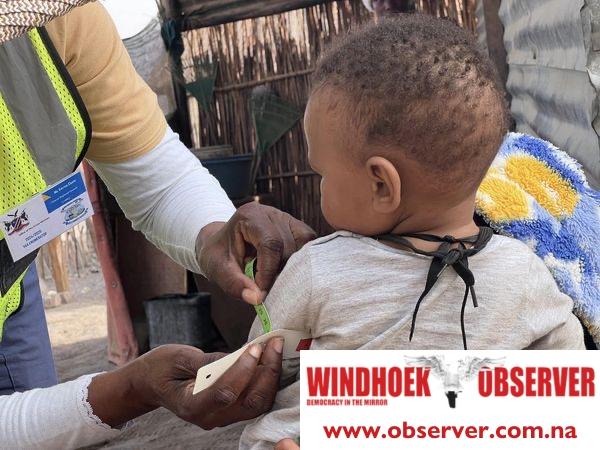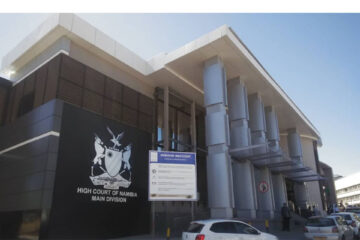
By: Niël Terblanché
Namibia is currently undertaking a substantial country-wide initiative to assess and address malnutrition among children, as part of the ongoing Vulnerability Assessment and Analysis (VAA) campaign.
The campaign, spearheaded by the Office of the Prime Minister, is a critical measure in response to increasing food and nutrition insecurity, which employs the Mid-Upper Arm Circumference (MUAC) method, a rapid and straightforward tool for identifying malnutrition in children.
The MUAC method, as a tool, is a critical component in the global fight against child malnutrition.
The World Health Organization (WHO) vouches for its effectiveness in identifying acute malnutrition in children aged 6 – 59 months.
The colour-coded MUAC tape is simple to interpret: Red indicates severe malnutrition, yellow signifies moderate malnutrition, and green reflects adequate nutrition.
This method is favoured for its ease of use, quick results, and non-invasive nature, making it ideal for large-scale screenings in diverse and often remote settings.
This straightforward approach allows for immediate identification and referral of malnourished children to appropriate care and support services.
Children identified as malnourished through this process can receive timely interventions, which are essential for preventing severe health complications and supporting their overall development.
The VAA campaign is part of a broader effort by the Namibian government to gather accurate and reliable data on the state of food and nutrition security across the country.
This data is crucial for informing policy decisions and planning interventions aimed at mitigating the effects of food insecurity, particularly among vulnerable populations.
The campaign, which covers all 14 regions of Namibia, is integral to the government’s strategy to avert large-scale hunger and malnutrition.
According to the Food and Agriculture Organization (FAO), the VAA campaign provides essential insights into the factors contributing to vulnerability, such as prolonged droughts, fluctuating agricultural outputs, and the impacts of climate change.
This year, Namibia is focusing on strengthening the capacities of local experts to conduct comprehensive food security assessments and to classify levels of food insecurity using internationally recognized standards.
The VAA campaign and the use of MUAC are timely, given the growing concerns over food insecurity in Namibia.
Over the past few years, Namibia has faced a substantial challenge in food production due to erratic rainfall and prolonged droughts.
The severe drought has not only affected agricultural outputs but also exacerbated the vulnerability of rural communities that rely heavily on subsistence farming.
The Namibian government, through initiatives like the VAA, is making concerted efforts to address these challenges.
By collecting and analyzing data on food security, the government aims to implement targeted interventions that can effectively reduce malnutrition rates and improve the overall well-being of its citizens.
With accurate data and timely interventions, Namibia is better positioned to combat the pressing issue of malnutrition and to ensure a healthier future for its children.
In this regard, the Office of the Prime Minister called on the international community, development partners and local communities to increase their humanitarian support for the hunger crisis that is slowly unfolding in Namibia.



